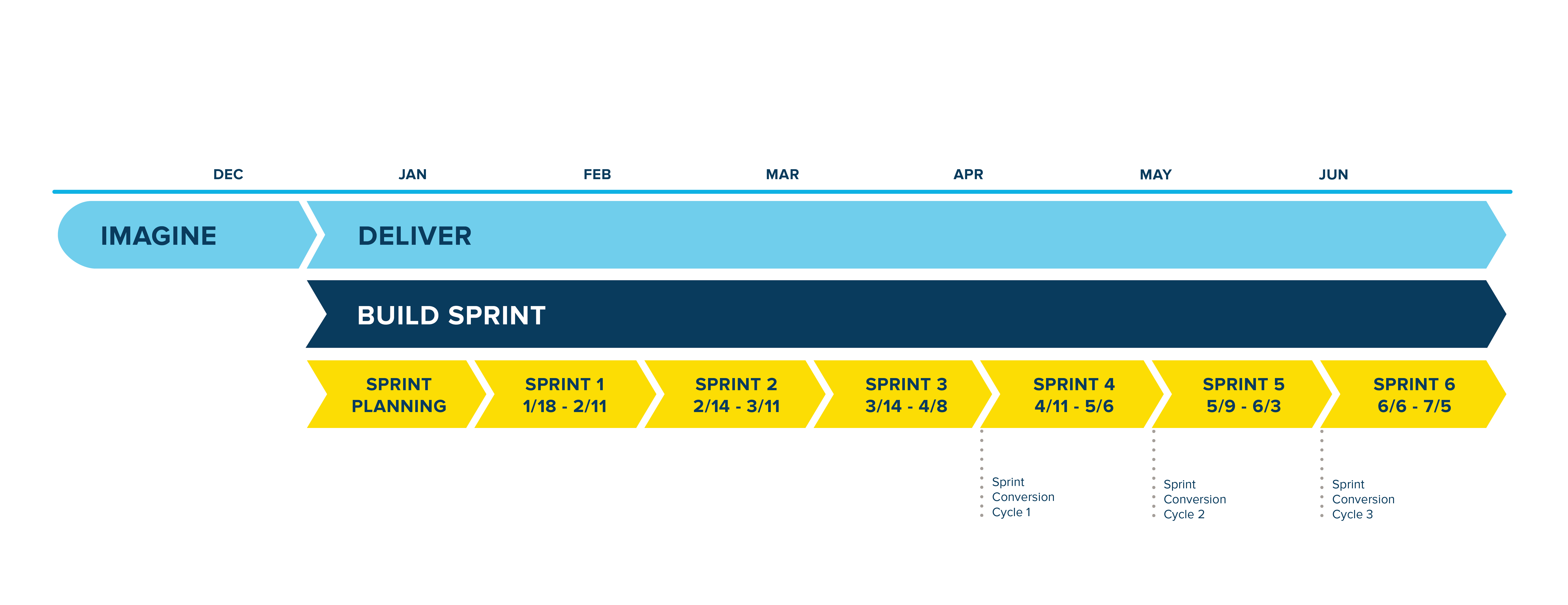
Aggie Enterprise Moves Into Build Phase
After the successful completion of design activities at the close of 2021, Aggie Enterprise is moving into the build phase, which runs through July 2022. This phase will focus on configuring the Oracle system to meet UC Davis’ needs. The scope and complexity of the build phase is reflected in the numerous user stories collected throughout the design stage of the project.
By the numbers: User stories, build sprints and conversion cycles
1,150 unique user stories
Did you know that we have approximately 1,150 unique user stories at UC Davis? These user stories, developed during the design phase of the project, serve as the foundation for system configurations throughout the build phase. They capture the “who”, “what” and “why” to describe requirements for different stakeholders.
User stories guide the project team’s work by:
- Enabling the project team to make planning decisions.
- Providing the foundation for building test scripts.
- Supporting the design and build of system functionality.
- Revealing opportunities to improve processes to address current pain points.
- Providing acceptance criteria for system functionality during sprints to identify technical dependencies or limitations.
User stories reveal our users’ business processes and unique needs through a simple and concise format:
“As a__(role)__ I want to __(do something)__ So that I__(achieve something).”
As a requester, I want to be able to create requisitions from shopping lists, so that I can re-order frequently requested goods/ services quickly.
As a requester, I want to be able to get notifications when a purchase order is created and approved against my requisition, so that I am aware of the current status of the ordering process.
6 iterative build sprints
An iterative sprint approach allows for early and frequent review and validation of the system functionality. Each of the six build sprints will provide opportunities to prioritize system configurations, review and validate against user stories, identify continuous improvement opportunities and engage with stakeholders.
The build sprints are focused around individual process areas and work streams. Each user story is categorized to support one of these areas:
Project Portfolio Management (PPM)
PPM includes contracts and grants, complex projects (including project billing) and faculty funds.
Enterprise Performance Management (EPM)
EPM includes financial planning, including budget, forecasting and aggregated labor planning.
Record to Report (RTR)
RTR includes general ledger, cash management, fixed assets and accounts receivable.
Procure to Pay (PTP)
PTP includes procurement, payables and supply chain.
For more Aggie Enterprise terms and definitions, visit the glossary.
3 conversion cycles
Real UC Davis data will be leveraged during three conversion cycles to test the process of converting data from existing systems into Oracle and further support validation of system functionality. Conversion cycles will follow sprints 4, 5 and 6, beginning in April 2022.
Aggie Enterprise build timeline

Questions?
For questions about Aggie Enterprise, check the FAQ page or email aggieenterprise@ucdavis.edu.